Hyundai i10 VS Hyundai Bayon – Specs, Efficiency & Price Comparison
Which model is the better choice – the Hyundai i10 or the Hyundai Bayon? We compare performance (90 HP vs 100 HP), boot capacity (252 L vs 411 L), efficiency (4.90 L vs 5.40 L), and of course, the price (14600 £ vs 20100 £).
Find out now which car fits your needs better!
The Hyundai i10 (Hatchback) is powered by a Petrol engine and comes with a Manuel or Automatic transmission. In comparison, the Hyundai Bayon (SUV) features a Petrol engine and a Manuel or Automatic gearbox.
When it comes to boot capacity, the Hyundai i10 offers 252 L, while the Hyundai Bayon provides 411 L – depending on what matters most to you. If you’re looking for more power, you’ll need to decide whether the 90 HP of the Hyundai i10 or the 100 HP of the Hyundai Bayon suits your needs better.
There are also differences in efficiency: 4.90 L vs 5.40 L. In terms of price, the Hyundai i10 starts at 14600 £, while the Hyundai Bayon is available from 20100 £.
Compare all the key specs now and find out which model fits your lifestyle best!
The Hyundai Bayon and Hyundai i10 are two compact cars catering to different needs within the urban motoring landscape. The Bayon stands out with its SUV-inspired design, offering enhanced ground clearance and a spacious interior that appeals to those seeking versatility without sacrificing maneuverability. In contrast, the Hyundai i10 shines in the tight confines of city streets, with its compact dimensions and agile handling, perfect for navigating urban environments.
Hyundai i10
The Hyundai i10 impresses with its compact design, making it an ideal choice for navigating through busy urban environments. Its interior is surprisingly spacious, offering drivers and passengers comfort beyond what one might expect from a city car. The model combines efficiency and practicality, making it an attractive option for those seeking both economy and functionality in their daily commute.
details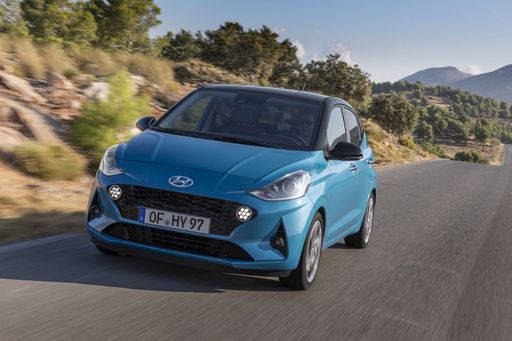 @ hyundai.news
@ hyundai.news
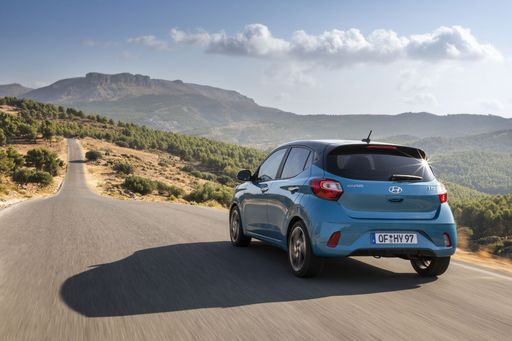 @ hyundai.news
@ hyundai.news
 @ hyundai.news
@ hyundai.news
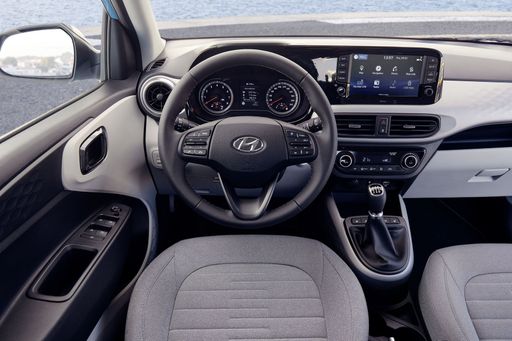 @ hyundai.news
@ hyundai.news
 @ hyundai.news
@ hyundai.news
Hyundai Bayon
The Hyundai Bayon is a compact crossover that effortlessly merges practicality with modern design. Its sleek exterior and spacious interior make it an ideal choice for urban settings and longer journeys alike. With a focus on comfort and connectivity, this vehicle provides a smooth driving experience paired with advanced technology features.
details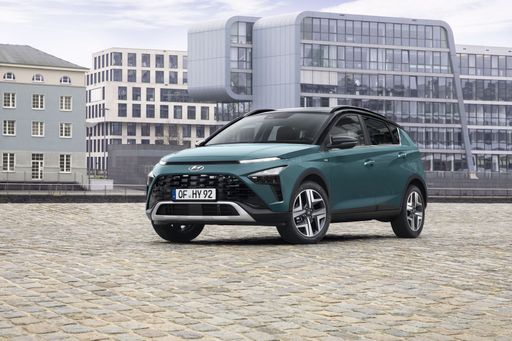 @ hyundai.news
@ hyundai.news
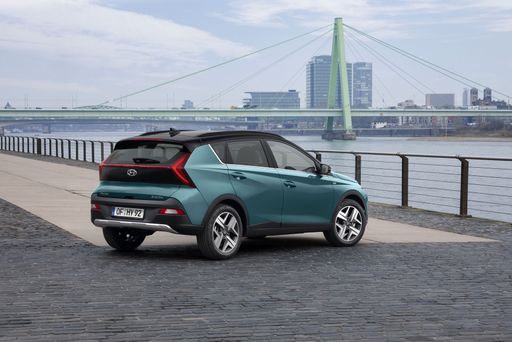 @ hyundai.news
@ hyundai.news
 @ hyundai.news
@ hyundai.news
 @ hyundai.news
@ hyundai.news
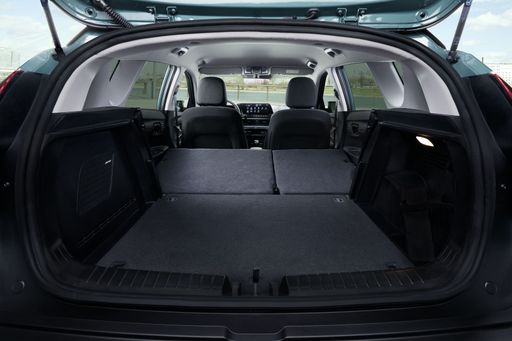 @ hyundai.news
@ hyundai.news
The Compact SUV vs. the Practical Hatchback: Hyundai Bayon vs. Hyundai i10
When it comes to versatile and value-packed vehicles, Hyundai has always been a brand that stands tall among its competitors. In this comparison, we delve into two of Hyundai’s noteworthy offerings for 2024: the Hyundai Bayon and the Hyundai i10. Both cars have distinct characteristics and cater to different segment needs. Let's explore their technical specifications, innovations, and what sets them apart.
Design and Dimensions: Size Matters
The Hyundai Bayon is designed as a compact SUV, featuring a bold and contemporary design. It measures 4180 mm in length, 1775 mm in width, and 1500 mm in height, offering a commanding road presence. On the other hand, the Hyundai i10 is a hatchback, with a compact size of 3670 mm in length, 1680 mm in width, and around 1480 mm in height, which makes it significantly more nimble for urban driving and parking.
The Bayon's SUV body type provides a spacious interior with a trunk capacity of 411 L, catering to families and extensive luggage requirements. The i10, while compact, offers a trunk space of 252 L, an ideal choice for city dwellers and daily commutes.
Performance and Efficiency
Under the hood, the Hyundai Bayon houses a 998 cm3 petrol engine that generates 100 HP and offers a smooth acceleration from 0 to 100 km/h in approximately 11.3 to 12.4 seconds. Its fuel efficiency stands at 5.4 L/100 km, supported by a 40 L fuel tank capacity, making it a balanced choice for both city cruising and highway journeys.
In contrast, the Hyundai i10 provides a range of engine options with petrol engine capacities of 998 cm3 to 1197 cm3, delivering between 63 HP to 90 HP. Its standout engine manages an acceleration of 0 to 100 km/h in about 11.4 seconds and achieves a fuel efficiency of as low as 4.9 L/100 km, given its 36 L fuel tank capacity. The i10 is designed to excel in fuel economy, making it a wise option for budget-conscious drivers.
Transmission and Drive
Both vehicles feature front-wheel drive systems. The Bayon is available with either a manual gearbox or a sophisticated dual-clutch automatic transmission, allowing for an engaging or relaxed driving experience. While the i10 also offers a manual gearbox, it introduces an automated manual transmission, which is particularly appealing for those who seek convenience in day-to-day driving without sacrificing the manual's control factor.
Comfort and Interior
The Hyundai Bayon boasts a roomy interior with seating for five passengers, ensuring ample space and comfort during longer journeys. The i10, although smaller, can comfortably accommodate four to five passengers, engineered to maximize interior space within its compact form factor.
Conclusion: Making the Choice
In summary, the decision between the Hyundai Bayon and Hyundai i10 ultimately depends on individual preferences and lifestyle needs. The Bayon, with its SUV attributes, is great for those requiring more space and versatility, whereas the i10, with its efficient size and economy, appeals to urban drivers seeking practicality and efficiency. Regardless of choice, Hyundai ensures reliability and innovation across both models, underscoring its commitment to delivering excellent driving experiences.

|

|
|
|
|
Costs and Consumption |
|
|---|---|
|
Price
14600 - 19000 £
|
Price
20100 - 25800 £
|
|
Consumption L/100km
4.9 - 5.5 L
|
Consumption L/100km
5.4 - 5.5 L
|
|
Consumption kWh/100km
-
|
Consumption kWh/100km
-
|
|
Electric Range
-
|
Electric Range
-
|
|
Battery Capacity
-
|
Battery Capacity
-
|
|
co2
110 - 124 g/km
|
co2
124 g/km
|
|
Fuel tank capacity
36 L
|
Fuel tank capacity
40 L
|
Dimensions and Body |
|
|---|---|
|
Body Type
Hatchback
|
Body Type
SUV
|
|
Seats
4 - 5
|
Seats
5
|
|
Doors
5
|
Doors
5
|
|
Curb weight
996 - 1099 kg
|
Curb weight
1170 - 1195 kg
|
|
Trunk capacity
252 L
|
Trunk capacity
411 L
|
|
Length
3670 - 3675 mm
|
Length
4180 mm
|
|
Width
1680 mm
|
Width
1775 mm
|
|
Height
1480 - 1483 mm
|
Height
1500 mm
|
|
Payload
344 - 423 kg
|
Payload
460 - 465 kg
|
Engine and Performance |
|
|---|---|
|
Engine Type
Petrol
|
Engine Type
Petrol
|
|
Transmission
Manuel, Automatic
|
Transmission
Manuel, Automatic
|
|
Transmission Detail
Schaltgetriebe, Automatisiertes Schaltgetriebe
|
Transmission Detail
Schaltgetriebe, Automat. Schaltgetriebe (Doppelkupplung)
|
|
Drive Type
Front-Wheel Drive
|
Drive Type
Front-Wheel Drive
|
|
Power HP
63 - 90 HP
|
Power HP
100 HP
|
|
Acceleration 0-100km/h
11.4 - 18.4 s
|
Acceleration 0-100km/h
11.3 - 12.4 s
|
|
Max Speed
143 - 175 km/h
|
Max Speed
176 - 179 km/h
|
|
Torque
93 - 172 Nm
|
Torque
172 - 200 Nm
|
|
Number of Cylinders
3 - 4
|
Number of Cylinders
3
|
|
Power kW
46 - 66 kW
|
Power kW
74 kW
|
|
Engine capacity
998 - 1197 cm3
|
Engine capacity
998 cm3
|
General |
|
|---|---|
|
Model Year
2024
|
Model Year
2024
|
|
CO2 Efficiency Class
C, D
|
CO2 Efficiency Class
D
|
|
Brand
Hyundai
|
Brand
Hyundai
|
Hyundai i10
Introduction to the Hyundai i10
The Hyundai i10 has consistently proven to be a dependable and stylish companion for urban driving. Known for its compact design and efficiency, this hatchback offers a perfect blend of modern aesthetics and practicality, making it a popular choice for city dwellers and small families alike.
Performance and Efficiency
The Hyundai i10 is available with both manual and automatic transmissions, catering to various driving preferences. Engine power ranges from 63 to 90 PS, providing a versatile driving experience for both novice and seasoned drivers. The fuel consumption varies between an impressive 4.9 to 5.4 litres per 100 kilometres, fitting for those looking to minimise fuel costs while also reducing their carbon footprint.
Engine and Transmission
Equipped with a choice of 1.0-litre or 1.2-litre engines, the i10 offers up to 172 Nm of torque, ensuring lively performance. The models feature front-wheel-drive configurations, allowing for smooth handling and reliable road performance. The car excels in city driving but is equally capable on longer journeys.
Interior and Comfort
Despite its compact size, the Hyundai i10 does not compromise on interior space and comfort. It accommodates four to five occupants comfortably, offering sufficient legroom and headroom. Its flexible seating arrangement and a 252-litre boot make it ideal for both quick trips and weekend getaways.
Safety and Technology
Safety remains a priority with Hyundai, and the i10 is no exception. It comes equipped with multiple airbags, stability control, and advanced braking systems. Technology-wise, the i10 features a user-friendly infotainment system with smartphone connectivity, ensuring a pleasant and connected drive.
Design and Style
The Hyundai i10’s design is both modern and sleek, making it stand out in the compact hatchback segment. With a length ranging from 3670 to 3675 mm, a width of 1680 mm, and a height of 1480 to 1483 mm, the i10 strikes a perfect balance between style and functionality.
Affordable Pricing and Value
The i10 is available in several trims including the Select, N Line, and Prime, among others, with prices ranging from €16,990 to €22,190. Considering its features and low running costs — with monthly expenses estimated between €694 to €793 — the Hyundai i10 offers substantial value for those seeking an economical yet stylish hatchback.
Conclusion
The Hyundai i10 combines efficiency, modern design, and practicality in a compact package. Whether you are seeking a reliable city car or an economical daily driver, the Hyundai i10 is a strong contender worth considering in the compact car market of 2024.
Hyundai Bayon
Introducing the Hyundai Bayon: A New Era in Compact SUVs
The Hyundai Bayon, a compact SUV designed with urban adventurers in mind, is making waves with its exceptional blend of style, performance, and technology. The brand has pulled out all the stops to ensure that the Bayon stands out in the crowded SUV market, offering a vehicle that is both practical and innovative.
Sleek Design and Cutting-Edge Aerodynamics
The Bayon features a striking exterior design, characterised by its bold lines and angular shapes. With a length of 4180 mm, a width of 1775 mm, and a height of 1500 mm, the Bayon commands attention with its modern appeal and aerodynamic efficiency. These dimensions not only contribute to its sleek design but also enhance fuel efficiency, achieving an impressive 5.4 L/100 km.
Engine Performance and Specifications
Under the bonnet, the Bayon is powered by a 1.0-litre T-GDI petrol engine, delivering a robust 100 PS or 74 kW. This engine is available with either a manual or automatic gearbox, meeting varied driver preferences. The front-wheel-drive system complements its urban-centric design, ensuring a smooth and responsive ride.
Maximised Interior Space and Comfort
The spacious interior of the Bayon accommodates up to five passengers comfortably. The vehicle boasts a boot space of 411 litres, perfect for both everyday use and weekend getaways. The cabin is designed with practicality and technology in mind, with intuitive controls and ample storage options.
Advanced Technology and Connectivity
Hyundai has equipped the Bayon with state-of-the-art technology to enhance the driving experience. The SUV features a high-resolution touchscreen, offering seamless connectivity with Apple CarPlay and Android Auto. Safety is also a priority, with multiple driver assistance systems including lane-keeping assist and forward collision avoidance assist.
Environmental Efficiency
Despite its powerful performance, the Bayon achieves a respectable CO2 efficiency class of D, with emissions as low as 122 g/km. This balance between performance and environmental responsibility makes the Bayon an attractive option for conscientious drivers.
Affordability and Market Appeal
The Hyundai Bayon is competitively priced, ranging from €22,900 to €29,600. Its affordable running costs, estimated at 32.3 to 36.4 cents per kilometre, further enhance its appeal to budget-conscious consumers. With monthly costs ranging from €806 to €909, the Bayon provides excellent value without compromising on features or performance.
Final Thoughts
The Hyundai Bayon truly stands out in the compact SUV segment, combining style, innovation, and practicality in an appealing package. It offers a versatile driving experience suited to the demands of modern urban living, making it a top contender in its class. As Hyundai continues to champion forward-thinking design and technology, the Bayon is a testament to the company's ongoing commitment to excellence.
The prices and data displayed are estimates based on German list prices and may vary by country. This information is not legally binding.
